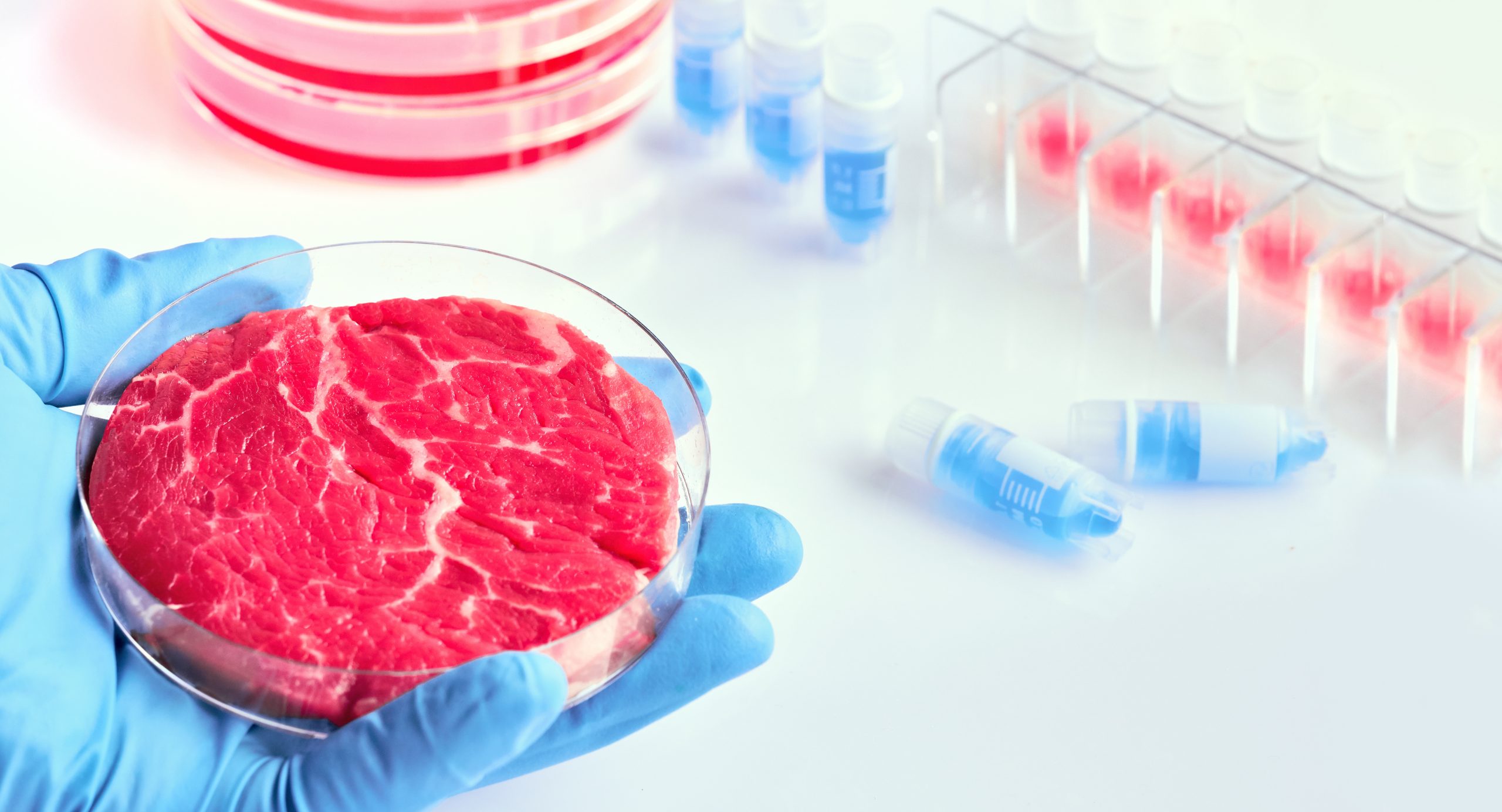
The next generation in bio-manufactured alternative proteins after fermentation is cultured meat and dairy products including milk. Cultured meat comes from stem cells collected from a living animal using minimally invasive methods. Then, the cells are grown in bioreactors with nutrients coming from a cell culture media and a scaffolding structure. These immature cells under the right conditions can be triggered to differentiate into the tissue composing structured meat (muscle, fat, connective tissues,…). The final product is the result of harvesting these cells and formulating them.
Cultivated meat is still a couple of steps behind fermentation in terms of scale-up and production cost and scientific innovations are still needed in this field across five main areas: cell lines, cell culture media, bioprocess design, scaffolding, end-products.
- Access to qualified cell lines. A great variety of cells can be used from different tissues and organs along with pluripotent stem cells. However, compared to human and rodent cells used in the pharmaceutical industry, animal cells used for cultivated meat (beef, poultry, fish,…) are much less researched. Therefore, there are needs both for :
-
- creating new cell lines which requires a coordinated effort (government-sponsored and industry consortium) given the time and budget-consuming nature of this type of exercise based on the experience of the pharma industry
- Understanding, selecting, and engineering cell lines whose properties are suited for large-scale manufacturing and specific end-products
- Reducing the cost of cell culture media. The cell culture media contains nutrients (basal media with glucose, inorganic salts, vitamins, and amino acids) supplemented with proteins and other growth factors needed for proliferation and differentiation for example. A first lever is reducing the cost of these growth factors including recombinant proteins by moving to food-grade components instead of pharma grade, scaling up the production of these proteins by fermentation, or replacing them with plant-based alternatives. Other leads include medium recycling or valorizing waste streams or metabolites produced by cells. In addition, the removal of animal-based components such as FBS (fetal bovine serum) can be challenging. For example, the start-up Eat Just was not able to remove it from its formulation at the time of its submission for approval in Singapore two years ago.
- Scaling up the bioprocess. The scale needed to have an impact worldwide requires much more than what is currently available. To make this scale-up happens (and especially the pilot scale), there is a need for collaborations on :
-
- optimizing bioreactors to the specificity of the cultivated meat (cell lines, cell culture media formulation…) which might require computational modeling techniques to move faster.
- Developing sensors for the monitoring of the process and automation
- Working on waste stream valorization and the use of renewable energies to optimize the efficiency and the sustainability
However, according to Merck, there is a reason for optimism with some start-ups that have already crossed the 1000 liters scale.
- Scaffolding. Scaffolds are key for cell growth and differentiation. Key areas of research involve:
-
- The identification of the best materials which need to be abundant, affordable and food-safe
- The development of techniques to assemble these materials into a scaffold especially for structured meat products (such as chicken breast or steak) and for compatibility with use in bioreactors at a large scale
- Structured end-products and hybrids. Currently, cultured meat is not able to achieve structured products at scale. Therefore, the first generation of products will likely be unstructured minced products at a premium pricing and hybrids. Hybrid products rely on the concept of fillers that has been used for several years by the meat industry to lower the cost, get structure and improve the shelf-life. Similarly, hybrid products from start-ups like SuperMeat and EatJust combine meat grown from cells and plant-based proteins with two types of products:
-
- Cultured meat with supporters from plants to enhance the product for specific applications like the cultured chicken commercialized in Singapore by Eat Just (70% of cultured chicken, 30% plant proteins to add the structure).
- Enhanced plant-based products with a small amount of cultured meat to address challenges encountered by plant-based products such as the melting temperature.
This approach also has the benefit of not requiring scaffold which will make the scale-up easier.
- Regulation and labeling. EatJust had the first cultured meat product in the world approved in Singapore in December 2020 and the 1880 restaurant made the first commercial sale of the approved cultivated chicken which represents a big step for this market. The regulatory process in other countries will need to be defined. In addition, labeling will be challenging to identify the right denomination and communication strategy towards consumers depending on how cultured meat compete in all aspects with its animal counterparts. For example, the recent debate on the EU proposal to assess if a plant-based protein may or may not use meat-related terms such as “burger” highlights the importance of labeling challenges for the alternative proteins market.
Sources:






